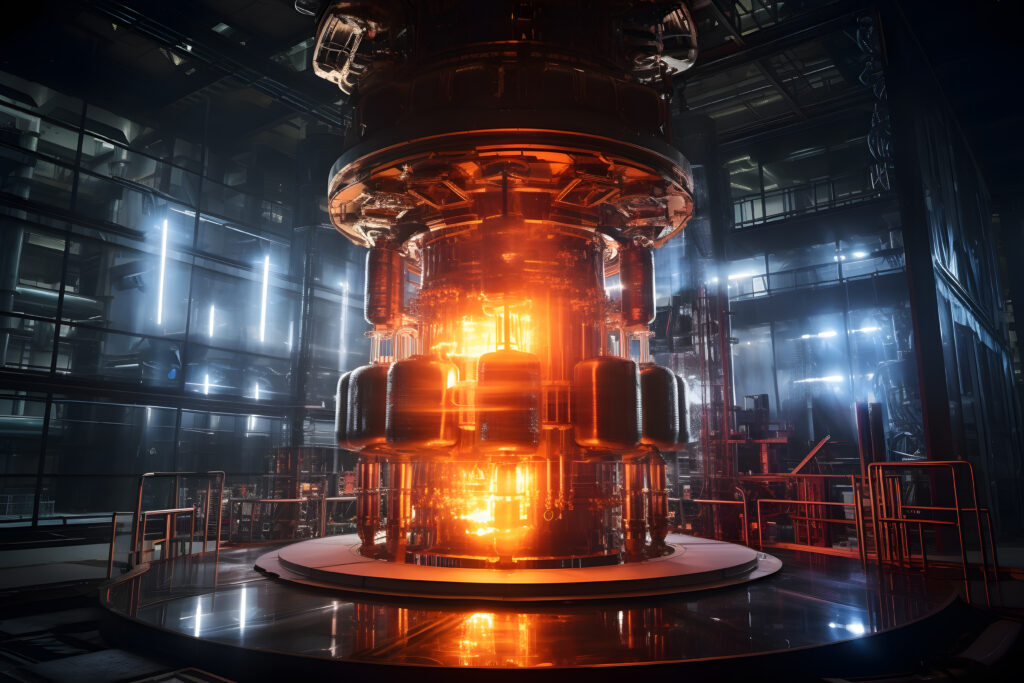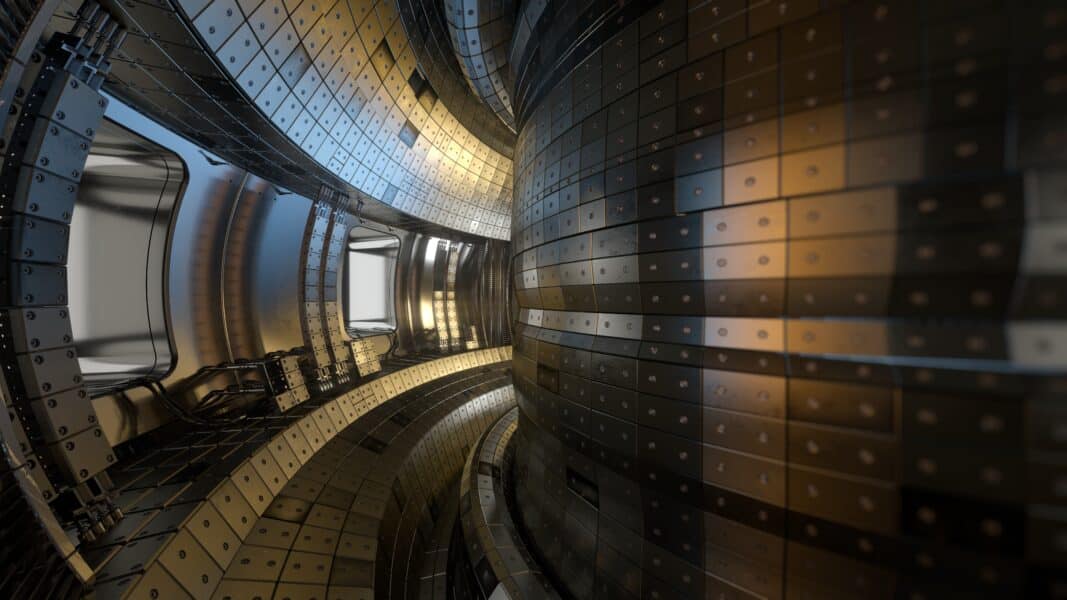#1 We know how to generate energy with fusion
TRUE — Fusion can generate net positive energy within a limited scope.
The Lawrence Livermore National Lab National Ignition Facility (NIF) in California proved this in 2022 with its laser ignition fusion setup. The NIF setup uses 192 of the world’s highest-energy lasers to pulse up to 4 million joules of ultraviolet energy onto a deuterium and tritium target. The target, approximately as big as a peppercorn, is suspended in a small x‑ray “oven” called a hohlraum, which can heat up to about 3 million degrees Celsius when hit by these powerful lasers. This causes the fuel to implode, creating the conditions for fusion. On 5th December 2022, NIF achieved target gain, meaning that 2.05 megajoules of laser energy delivered to the target generated 3.15 megajoules of fusion energy. More energy came out of the target than was put in. This point, called “ignition”, was a breakthrough.
FALSE — That reaction created energy, but nowhere near enough to power the facility.
Overall, the system still experienced a substantial net energy loss. To give a sense of scale, the target’s 1.1 megajoules of net energy is approximately 0.306 kWh. By comparison, that would only keep a small 5W LED light bulb on for 20 hours after converting the heat to electricity. In addition, NIF scientists estimate the NIF laser facility typically requires about 100 times more energy to run than the amount of energy delivered by the laser to the target itself.
UNCERTAIN — It’s unclear when and how this crucial point, called the “engineering gain”, will be met.
At this point, engineers need to focus on finding additional efficiencies in the system to ensure it produces more energy than it uses. One way to do this could be to reduce the system’s energy use relative to output by making more energy-efficient components, such as lasers or superconductors. Changes like tweaking the heat insulation or rolling out AI controls to operate systems faster than a human would also help. Other gains can be made by improving the machine’s materials and components to allow the system to operate at higher power levels. To do so, engineers could look to include materials that can withstand extreme temperatures and design even stronger magnets to better confine and control the plasma used in fusion reactions. Another approach is to improve the process that captures and converts the energy from the fusion reaction to electricity.
#2 Fusion will become a source of clean, limitless energy
TRUE — Fusion is generally seen as “clean” energy.
It produces substantially less radioactive “waste” than fission – though it is possible that with emerging technologies, waste from fusion and fission could be reused. Still, like other nuclear fission, fusion will require appropriate and comprehensive oversight. One concern is that the reaction could be used to generate fissile materials usable in weapons. Fusion machines and related reactions do not directly produce material useful for weapons. The reaction does, however, create an enormous amount of neutrons.

On the bright side, these neutrons could help generate more fuel for the fusion reaction — many designs plan to incorporate a “breeding blanket,” a layer of materials that acts as heat insulation, but is also lined with materials that can capture the neutrons to create more tritium. Uranium or thorium could also be placed in some breeding blanket designs. The concern is that these materials, once irradiated, could generate uranium-235 that can be used in nuclear weapons. Physical ways to deter this process exist, such as requiring the use of lithium‑6 in the blanket modules. The IAEA will be important in ensuring non-proliferation safeguards and oversight.
FALSE — Fusion energy may be near limitless, but that doesn’t necessarily translate to unending energy.
Some fusion energy technologies under development could theoretically produce more fuel than they consume and, therefore, be essentially limitless. But that doesn’t mean that this would provide the energy society needs. Most researchers expect building and operating early fusion plants to be very expensive. Whether society will be willing to pay to run costly fusion reactors will depend on how fusion fits in with other clean energy systems.
UNCERTAIN — When fusion will start powering the world is still unclear.
I am optimistic that fusion will eventually provide clean energy to at least parts of the world. However, the technology is unlikely to be ready to entirely support the transition away from carbon fuels in its own. This lag could put it at a disadvantage compared to other products adopted early on that could be deployed at a much larger scale. Still, we could see a cascade of breakthroughs that quickly accelerates progress for fusion. Or we may have to wait a long time before the next breakthrough arrives.
#3 Startups are ready to hit the market with fusion
TRUE — Startups are saying they are ready to build commercial pilot plants.
Several startups have announced very ambitious timelines. Helion, for instance, has promised to start producing energy from a fusion plant by 20281. In their 2023 report, the Fusion Industry Association found that many others believe a fusion plant will deliver electricity to the grid before 20352. Fusion firms are indeed making iterative progress and marching steadily toward success. The NIF, which proved fusion ignition, has provided crucial data that will help guide research programs—particularly for laser ignition type of fusion. Some firms have also started rolling out artificial intelligence to optimise their approach to fusion, generating some interesting results. Still, making progress is different from having a product available.
FALSE — No startup has shown evidence that they reached the stage of development needed to roll out fusion to the market in the near term.
Startups still need to demonstrate their systems’ net energy gain and overall engineering gain. They also have to learn how to run their fusion reaction on scales that can generate a profit. As much as fusion companies want to put a timeline on achieving these technological milestones, these are breakthroughs you can’t schedule.
UNCERTAIN — There’s also a tricky commercial case to overcome.
Fusion is still a very high-risk investment because the technology has yet to be proven. It’s not like investing in solar cells 15 years ago when they were already at 20% efficiency. It’s more like investing in solar cells 40 years ago when they had 1% efficiency and a very small rollout. Startups will need to build pilot plants to prove their concept. Raising enough capital to make those plants will likely be tricky. First-generation stations are likely to be costly and unreliable—that is just a part of innovation. Still, assuming we’re going to move away from fossil fuels, that population growth dramatically increases, and developing nations’ demand for energy continues to grow, there’s a vast potential market for all clean energy sources moving forward.








